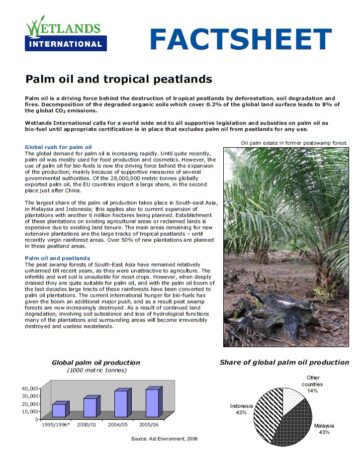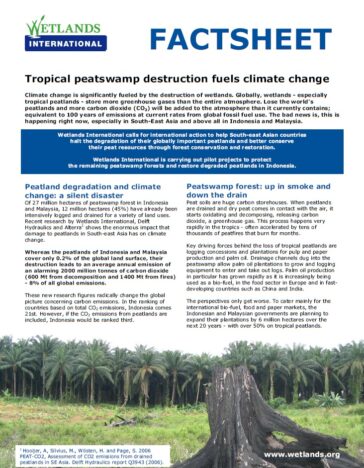
Factsheets: palm oil, tropical peatlands and climate change
-
Climate mitigation and adaptation
Globally, wetlands – especially tropical peatlands – store more greenhouse gases than the entire atmosphere. Lose the world’s peatlands and more carbon dioxide (CO2) will be added to the atmosphere than it currently contains; equivalent to 100 years of emissions at current rates from global fossil fuel use. The bad news is, this is happening right now, especially in South-East Asia and above all in Indonesia and Malaysia.
Wetlands International calls for international action to help South-east Asian countries halt the degradation of their globally important peatlands and better conserve their peat resources through forest conservation and restoration.
Wetlands International is carrying out pilot projects to protect the remaining peatswamp forests and restore degraded peatlands in Indonesia.
Palm oil and tropical peatlands
Palm oil is a driving force behind the destruction of tropical peatlands by deforestation, soil degradation and fires. Decomposition of the degraded organic soils which cover 0.2% of the global land surface leads to 8% of the global CO2 emissions.
Wetlands International calls for a world wide end to all supportive legislation and subsidies on palm oil as bio-fuel until appropriate certification is in place that excludes palm oil from peatlands for any use.


